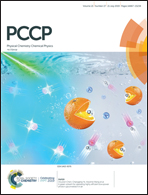Optical interband transitions in strained phosphorene
Abstract
In this paper, we have concentrated on the orbital and hybridization effects induced by applied triaxial strain on the interband optical conductivity (IOC) of phosphorene using a two-band Hamiltonian model, linear response theory and the Kubo formula. In particular, we study the dependence of the electronic band structure and of the IOC of a phosphorene single layer on the modulus and direction of the applied triaxial strain. The triaxial strain is included in a model through the introduction of strain-dependent hopping parameters using the Harrison rule. Among the various configurations for applying the triaxial strain, considerable findings are presented here in three classes: (i) uniform, (ii) in-plane uniform and (iii) non-uniform triaxial strain. The main consequence of applying triaxial strain is that of increasing and decreasing the band gap depending on the considered class of study, resulting in a blue shift and red shift of the interband optical transitions, respectively. Our results show that a pure blue shift independent of the strain modulus as well as strain sign (tensile or compressive) emerges when applying non-uniform triaxial strain. The overall feature of our outcomes is tailoring the edge-dependent optical responses of phosphorene in the presence of triaxial strain, which provides the required conditions of tuning the optical properties of phosphorene for future experimental research.



 Please wait while we load your content...
Please wait while we load your content...